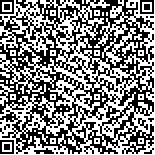| 摘要: |
| 随着共享单车的盛行,绿色健康的
骑行方式正成为市民主要的短途交通出行
选择,但随之也带来诸多问题,合理规划设
计城市公共骑行空间是解决这些矛盾的主要
途径。文章通过对南京市区摩拜单车定位数
据4天的采集和整理,分析了市民的骑行时空
间特征,并结合城市路网对鼓楼区进行街区
层面骑行轨迹的分析研究。基于研究结果,
文章提出了分区分级设立骑行空间系统、城
市组团设置自行车专用道和提升街巷骑行空
间舒适度的公共骑行空间优化建议。 |
| 关键词: 共享单车 线密度 骑行空间 骑
行OD轨迹 南京市 |
| DOI:10.13791/j.cnki.hsfwest.20200211 |
| 分类号: |
| 基金项目:安徽省住房城乡建设科学技术计划项目“大数
据背景下的城市公共骑行空间环境优化设计研
究”(2019-RK003);安徽省高等教育振兴计划
项目(2013zytz020) |
|
| Research on Optimization of Urban Public Riding Space Based on the Location Data of Bicycle-Sharing: A Case of Nanjing City |
|
CHENG Chezhi,ZHANG Qiong
|
| Abstract: |
| In recent years, the sharing economy has taken on a leap-forward development
in China, reaching into all aspects of urban life. This new mode of transportation has raised
higher requirements for urban construction, but also exposed many problems. In terms of urban
planning, it is necessary to make rational planning and construction of urban riding space to
solve these problems. Shared bikes can provide data with time and space attributes in daily use.
By means of big data analysis, we can more objectively understand the rules and the spatial
characteristic of the citizen riding, providing strong support for the planning and design of
urban riding space.
The research area is selected as the downtown areas of Nanjing where the shared bikes
are put into use, mainly including Gulou District, Jianye District, Xuanwu District, Qinhuai
District and Yuhuatai District in the central urban area, as well as Qixia District, Pukou
District and Jiangning District, which have developed rapidly in recent years.
In this study, the data of Mobike APP system is captured by using Python crawler software
programming. The bike data information collected include bike ID, bike type, longitude and
latitude information of bike location, and the time of bike data collection. During the data
collection period, the weather is sunny or cloudy, respectively on October 31st, 2017, November
2nd and November 4th, 2017, with the collection duration of 24 hours and the time interval of
1 hour. In the later period, due to the need of block level research, the bike data collection is
carried out on the central street of Gulou District on December 22 during the whole day, with a
time interval of 30 minutes.
In this study, the line tracking tool based on GIS software is utilized to simulate and analyze
the path of its riding OD data, and to study its riding rules such as moving distance and spatial
distribution. The results show that there are four core areas of the use of shared bikes in Nanjing,
namely, the center of Gulou, Jiangning Higher Education Mega Center, Pukou Higher Education
Mega Center and Maqun Science Park. Through the field investigation and analysis, the common
characteristics of these four blocks are centralized distribution of universities and high-tech
enterprises, a large number of floating population, and a large number of young people with great
demand for short-distance travel. In addition, Xianlin University Town, the surrounding area of
Olympic Sports Center and Pukou riverside area have great development potential for the use of shared bikes, and are forming the core area of bike use. The latter two plots are large-scale residential function concentrated plots.
Through the riding track OD analysis, it can be seen that many users have broken through the original habitual use area and distance limit,
crossing several blocks, not only transfer, short journeys and other behaviors. All functional areas in the city are not necessarily independent and
closed for bikes, and citizens need to carry out long-distance and large-scale riding.
In addition, compared with rail transit hubs and bus stations, it is found that the high-density area of riding track is not limited to the vicinity
of the stations, although the areas where shared bikes are put into use are mainly near the stations. Combined with the riding OD map, it can be
seen that stations and places of residence in parts of Gulou District and Jiangning Higher Education Mega Center are no longer the only starting
and ending points for riding. The high-density areas of riding tracks are distributed in the living areas. Riding has become an important means
of transportation for short-distance life-style travel in the region. Thus it can be seen that a relatively independent life-style short-distance riding
space system will be formed in various urban groups in the future.
Through the research on the west side of Xuanwu Lake Park in Gulou District, the core plot of shared bike use in Nanjing City, it is found
that the average riding distance in this area is 768 m, the median value is 541 m, and the maximum riding distance in this area is 8.2 km. The
short-distance riding space within 2 km is mainly distributed in the area of the people flow distribution center at all levels, and the roads of all
grades can be used as riding space. The medium- and long-distance riding more than 2 km mostly chooses the city’s main roads, and the riding
space is associated with the city’s various transportation hubs, most of which are commutes.
In view of the above conclusions, this paper puts forward the corresponding suggestions for the optimization design of riding space in
Nanjing: Firstly, to set up riding space system in different regions and at different levels; Secondly, to set up bike lanes between the central groups
of the city; thirdly, to enhance the comfort of riding space in streets and lanes, and relieve the pressure of urban riding demand. |
| Key words: Bicycle-Sharing Linear Density Riding Space Riding Track OD Nanjing City |


